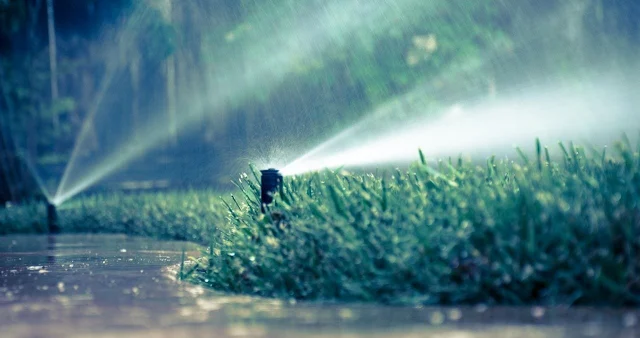How A Sprinkler System Water Sensor Works
Automatic sprinkler systems rely on a timer, but there is typically no way to adjust the watering pattern if an unexpected rainstorm occurs, meaning you may be watering your lawn during a deluge. Various and complex technologies are employed by sprinkler system water sensors to determine rain amounts. Because of this, your automatic sprinklers won't work when it's raining. They'll start watering again when the area has dried out.
Expansion Disks
Using water pressure, sensors with expansion disks identify whether or not it has rained. Rain falling on the cork-made disks causes them to expand. At a certain threshold, the cork expansion activates a pressure switch to turn off the irrigation system. As the cork dries following a rain, it depressurizes the switch to reactivate the sprinkler system and return it to its normal schedule. Depending on the manufacturer, the rainfall setting on the disks can be adjusted so that even light rain shuts off the sprinklers.
The Rain Cup
Water density is one of the simplest sensor technologies. A sensor cup is typically put on a roof and is exposed to the elements. As rain falls, it collects in the cup. Once the cup becomes sufficiently heavy, an electronic signal is delivered to the controller of the irrigation system, effectively turning off the sprinklers. As the water in the cup evaporates, the sprinklers revert to their original state. The open cup is a key downside of this sensor system. The sprinkler system will cut off due to the cup's weight if it is filled with debris, such as leaves.
Electrodes
Using a cup and conductivity, electrode sensors shut off your irrigation system. As water fills the cup, microscopic salts within the water enable the electrodes to complete a circuit — they conduct electricity via the water. By completing the circuit, the electrodes shut down the sprinkler system. Like other sensors, water evaporation eventually stops the electrodes from forming a circuit, which makes the sprinkler work again.
Soil Moisture Alternatives
An alternate water sensor measures soil moisture instead of rain. You insert the sensor into the ground so that it penetrates halfway into the root system of your garden. As rain falls, the sensor senses ground moisture, similar to the electrode cup technology. If the soil is too wet, the sensor turns off the sprinkler system. Once the soil has dried, the system starts up again.

